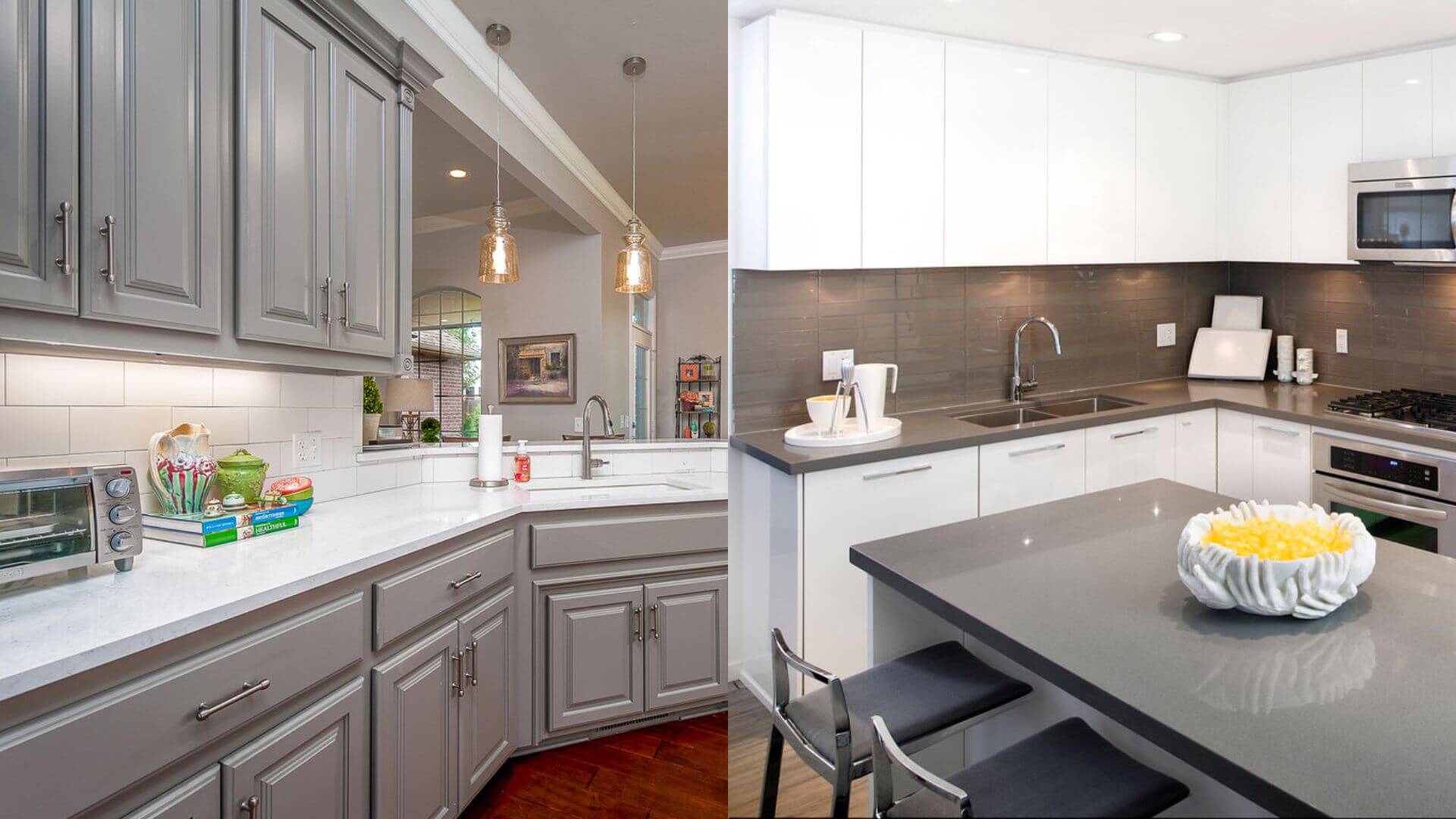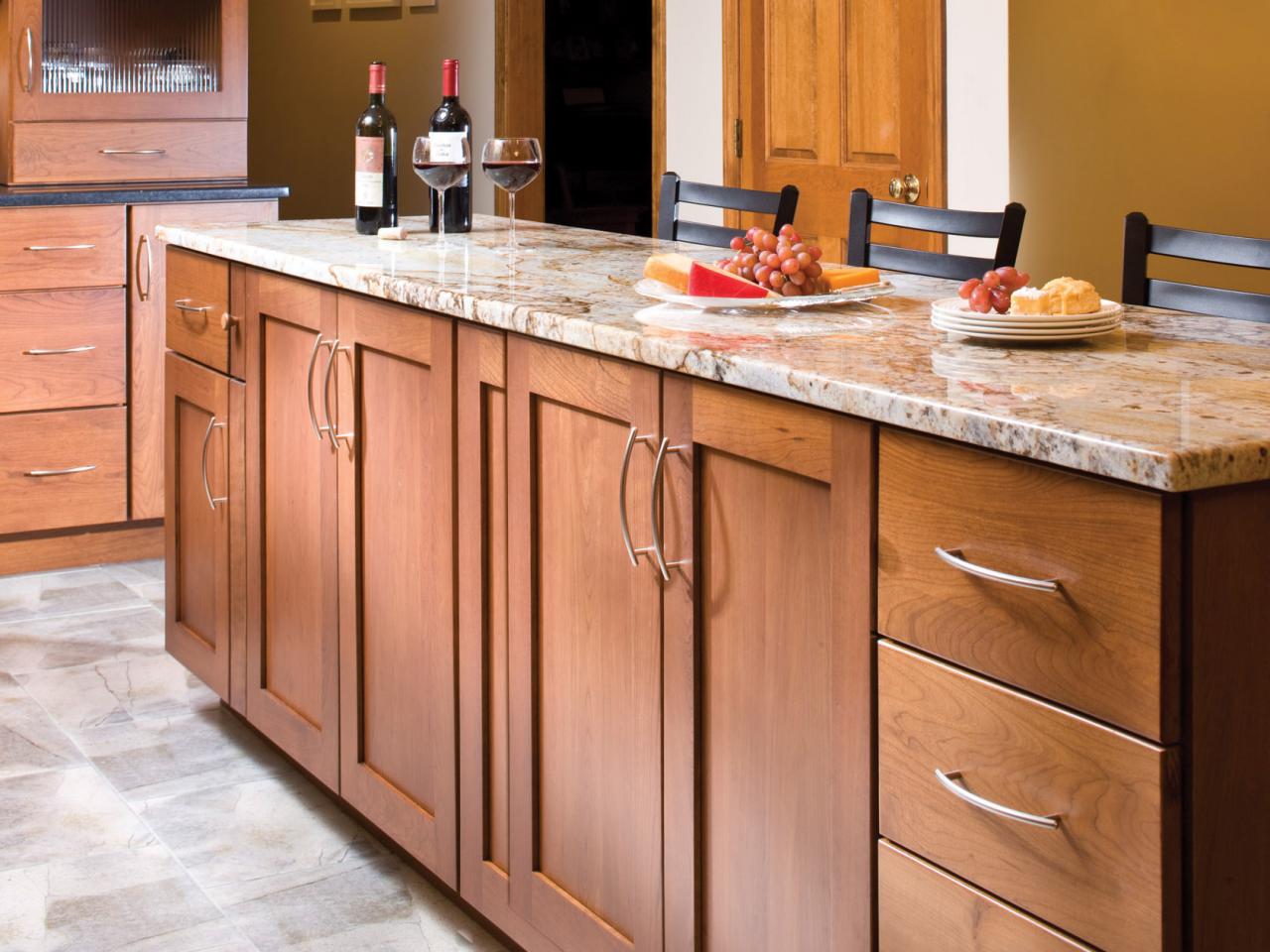Shaker vs. Recessed Panel Cabinet Styles

Choosing the right cabinet style is an essential part of kitchen design, influencing both aesthetics and functionality. Two popular styles, Shaker and Recessed Panel, offer distinct visual appeal and practical considerations. Understanding their differences helps you make an informed decision for your kitchen.
Aesthetic Features
Shaker and Recessed Panel cabinet doors have distinct aesthetic features that influence the overall kitchen style.
- Shaker cabinets feature a simple, clean design with a flat center panel framed by a raised edge. This minimalist style creates a timeless and elegant look, often associated with modern and contemporary kitchens.
- Recessed Panel cabinets, on the other hand, feature a raised center panel that sits within a frame. This creates a more traditional and ornate look, often seen in classic and farmhouse kitchens.
Material Choices
Both Shaker and Recessed Panel cabinets can be crafted from various materials, each with its own advantages and disadvantages.
- Shaker cabinets are commonly made from wood such as maple, cherry, and oak. These woods offer durability, natural beauty, and a wide range of finishes. However, they can be more expensive than other options.
- Recessed Panel cabinets are also often made from wood, but they can also be found in more affordable materials like MDF (medium-density fiberboard) or plywood. MDF and plywood are less expensive and offer a smooth surface for painting, but they may not be as durable as solid wood.
Impact on Kitchen Design
The choice of cabinet style significantly impacts the overall kitchen design and ambiance.
- Shaker cabinets, with their minimalist design, create a clean and uncluttered look, often enhancing a modern or contemporary kitchen’s aesthetic. They work well with open floor plans and minimalist décor.
- Recessed Panel cabinets, with their more ornate design, can create a warm and inviting atmosphere, often complementing classic or farmhouse kitchens. They pair well with traditional décor and rustic elements.
Functionality and Practical Considerations

The choice between shaker and recessed panel cabinets extends beyond aesthetics; it significantly influences functionality and practicality. This section delves into the impact of each style on storage space, accessibility, cleaning, and durability.
Storage Space and Accessibility
The design of cabinet doors influences the amount of storage space and accessibility within the cabinet.
- Shaker cabinets, with their flat, simple design, often offer a slightly larger interior space due to the absence of raised panels. This is particularly beneficial for storing larger items, such as pots and pans.
- Recessed panel cabinets, with their intricate design featuring raised panels, can sometimes limit interior space, especially if the panels are deep. However, the recessed panels create a more visually appealing and elegant look.
Accessibility is another crucial factor.
- Shaker cabinets, due to their simple design, typically offer easier access to items stored within. This is especially advantageous for cabinets located in areas with limited space, where opening and closing the door requires careful maneuvering.
- Recessed panel cabinets, with their raised panels, may present a slight challenge in accessing items stored at the back of the cabinet. This is because the raised panels can obstruct the opening of the door, requiring a more forceful push to fully open it.
Ease of Cleaning and Maintenance
The choice of cabinet style also affects the ease of cleaning and maintenance.
- Shaker cabinets, with their smooth, flat surfaces, are generally easier to clean. The absence of intricate details, such as raised panels, makes it simpler to wipe down dirt and grime.
- Recessed panel cabinets, with their raised panels and intricate details, can be more challenging to clean. Dust and dirt can accumulate in the crevices and grooves, requiring more meticulous cleaning. This is especially true for cabinets in kitchens, where grease and food splatters can accumulate.
Durability and Longevity
The durability and longevity of cabinets are important considerations, particularly for high-traffic areas like kitchens.
- Shaker cabinets, with their simple construction, tend to be more durable and less susceptible to damage. The flat, solid panels are less prone to dents, scratches, or warping compared to recessed panels.
- Recessed panel cabinets, with their intricate design and raised panels, can be more prone to damage. Dents, scratches, and warping can occur more easily on the raised panels, especially with heavy use or impact. This can affect the overall appearance and longevity of the cabinets.
Cost and Budget Considerations: Shaker Vs Recessed Panel Cabinets

The cost of cabinets is a significant factor in any kitchen renovation project. While the initial price tag might seem daunting, understanding the factors that influence cabinet costs and exploring cost-saving strategies can help you make informed decisions and stay within your budget.
Average Cost Comparison
The average cost of shaker and recessed panel cabinets can vary significantly depending on factors like materials, craftsmanship, and customization options. Here’s a general comparison:
- Shaker Cabinets: Shaker cabinets typically fall within a mid-range price point. The simplicity of their design allows for more affordable material choices, while still offering a timeless and versatile aesthetic. The average cost for shaker cabinets can range from $150 to $350 per linear foot, depending on the specific features and materials used.
- Recessed Panel Cabinets: Recessed panel cabinets, with their intricate details and more elaborate construction, often come at a higher price. The use of higher-quality materials and the added complexity of the design contribute to the increased cost. The average cost for recessed panel cabinets can range from $200 to $450 per linear foot, with premium options exceeding this range.
Cost-Saving Strategies
While both shaker and recessed panel cabinets can be budget-friendly depending on your choices, here are some strategies to help you save money:
- Consider Stock Cabinets: Stock cabinets are pre-made cabinets that offer a more affordable option compared to custom cabinets. While the selection may be limited, stock cabinets can be a great choice for those seeking a budget-friendly solution.
- Choose Standard Sizes: Opting for standard cabinet sizes can help you save money, as they are typically more readily available and often priced lower than custom-sized cabinets.
- Explore Semi-Custom Options: Semi-custom cabinets offer a balance between affordability and customization. You can select from a range of pre-designed cabinet styles and choose from various materials, finishes, and hardware to personalize your kitchen.
- Negotiate with Contractors: Don’t be afraid to negotiate with contractors and cabinet manufacturers. Shop around and compare quotes from multiple vendors to secure the best prices.
Impact on Overall Kitchen Renovation Budget, Shaker vs recessed panel cabinets
The choice of cabinet style can significantly impact the overall budget for your kitchen renovation. Recessed panel cabinets, with their higher cost, can contribute to a more expensive project overall. Shaker cabinets, on the other hand, can help you stay within a tighter budget without compromising on style. However, it’s important to remember that the overall cost of your kitchen renovation will depend on a variety of factors, including:
- Size of the Kitchen: A larger kitchen will require more cabinets, naturally increasing the overall cost.
- Materials and Finishes: The materials used for your cabinets, countertops, flooring, and other elements will impact the overall budget.
- Labor Costs: The cost of labor for installation and other services can vary depending on your location and the complexity of the project.
Shaker vs recessed panel cabinets – Shaker and recessed panel cabinets offer distinct aesthetics for kitchens, with shaker’s simple lines providing a clean look while recessed panels offer a more traditional feel. When considering a dedicated space for wine storage, a wine cabinet cooling unit is essential for maintaining optimal conditions.
Ultimately, the choice between shaker and recessed panel cabinets hinges on personal preference and the overall design theme of your kitchen.
Shaker cabinets, with their simple, clean lines, are a popular choice for modern kitchens. Recessed panel cabinets, on the other hand, offer a more traditional aesthetic. Both styles can be used to create a custom look, and both can be utilized in a diy cabinet to hide washer and dryer.
The choice ultimately depends on personal preference and the overall design of the space. While shaker cabinets might be more versatile for a variety of spaces, recessed panel cabinets can add a touch of elegance to a laundry room.
